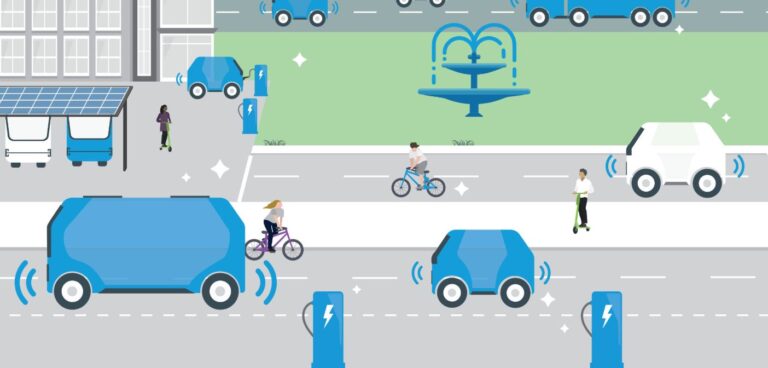The low carbon and fuel cells centre of excellence Cenex has predicted a fleet of autonomous robotaxis could generate an annual profit of around £27,000 per vehicle by 2030.
According to the independent non-profit research consultancy, deploying driverless two-seater robotaxi pods could make the total cost of ownership and operation attractive, both economically and environmentally.
The analysis by Cenex said this could be achieved with ultra-durable powertrains capable of 300 miles per day for 10 years and utilisation rates of 90%. Its report Cenex-LCV 2021 compared a human-driven battery electric taxi with a regular battery electric autonomous vehicle used as a robotaxi, and a robotaxi with an ultra-durable drivetrain, all completing 107,000 miles per year.
It found the human-driven taxi would require a multiple shift operation to achieve this, which adds costs to the business model, while the costs of replacing regular drivetrains exceeds the additional outlay for an ultra-durable one.
The ultra-durable powertrain adds 11% (£1,900) to the initial investment in capital costs. However, the normal autonomous vehicle requires five powertrain replacements along its lifetime, while the ultra-durable autonomous vehicle only requires one. The calculation assumes a 150,000-mile lifetime for the normal powertrain and a one-million-mile lifetime for the ultra-durable one. After 10 years, this involves an overall vehicle cost saving of 7% (£8,300), the report said.
Furthermore, Cenex added for robotaxi fleet business to make the initial investment back in three to five years, including overheads like marketing and non-driving staff, the trip fares charged to customers could be similar to the average UK total ownership costs for private battery electric cars (£0.68/mile).
Victor Lejona, technical specialist at Cenex, said: “We expect the progression of connected and autonomous technology this decade to cause a shift in vehicle ownership, and this could open up new opportunities for the mobility sector.
“It’s important to get the most use out of vehicles to maximise the financial investments and reduce the environmental impacts, and creating ultra-durable drivetrains means zero emission vehicles can cover more miles.
“We are pleased to release this white paper, where we gaze at the future of mobility and model the operation patterns and business case for ultra-durable autonomous vehicles.
“Thanks to the very valuable inputs and cooperation from Romax Technology and Empel Systems, we are able to assess the engineering, economic and environmental cases of autonomous robotaxis, and how well they fit within the wider transport policy on the road to net zero.”





